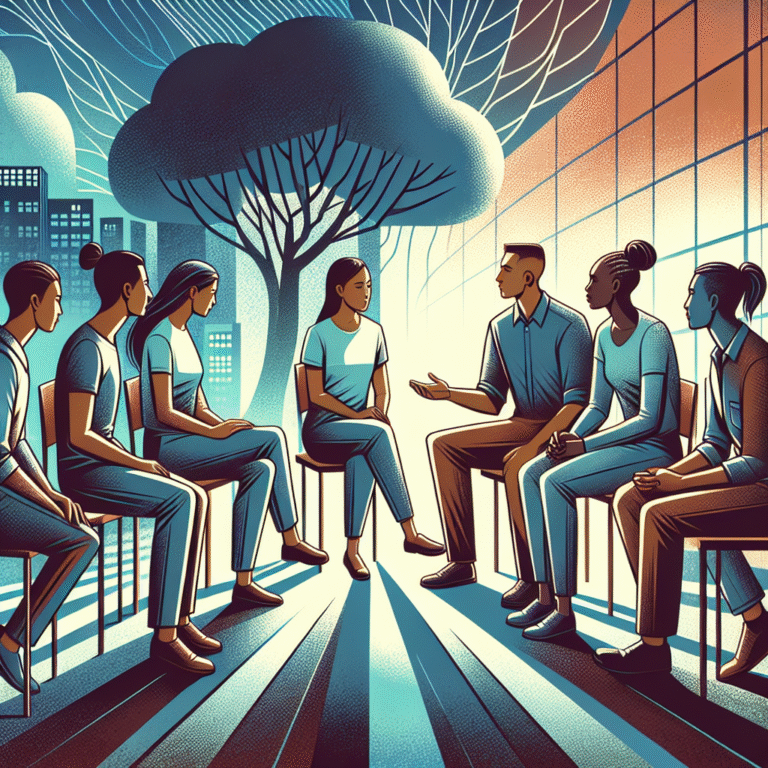
Introduction: The Pulse of Unsolved Homicides
Every unsolved homicide resonates with a haunting silence, echoing the desperate pleas of families yearning for closure. As advancements in technology and investigative techniques evolve, the notion of reopening cold cases is not just a possibility; it’s becoming a vital path to justice. In this article, we will delve into the intriguing world of cold cases revisited: new leads in unsolved homicides, exploring how fresh eyes, innovative methods, and relentless determination can breathe new life into investigations that once seemed dormant.
Why Cold Cases Matter
Cold cases represent unfinished stories, lingering questions, and unresolved losses. Beyond the statistical numbers of homicide rates, each case embodies a life lost and a family left grappling with profound grief. As we look at the modern approach to cold cases revisited, it becomes evident that the quest for justice is not merely a legal pursuit but a moral imperative that resonates deeply within our social fabric.
The Evolution of Cold Case Investigations
From Forgotten Files to Digital Revivals
Historically, many unsolved homicides have languished in the archives, gathering dust. However, advancements in forensic science, DNA technology, and digital databases have transformed the landscape of cold case investigations. The emergence of these innovative tools serves as both a curse and a blessing, reigniting hope while revealing the harsh realities of systemic failures.
Case Study: The Golden State Killer
Perhaps one of the most famous examples of a cold case revival is the capture of the Golden State Killer. After eluding law enforcement for over four decades, a breakthrough came via genealogy websites. Law enforcement used DNA evidence combined with familial databases, leading to the arrest of Joseph James DeAngelo in 2018. This case not only showcases the importance of new technology but emphasizes the tangible results of revisiting lingering cold cases.
| Aspect | Detail |
|---|---|
| Original Crime | Series of murders and rapes across California |
| Arrest Year | 2018 |
| Method of Breakthrough | DNA genealogy technology |
| Impact on Cold Cases | Sparked renewed interest in utilizing genealogy for unsolved crimes |
The Role of Technology: A Game-Changer
The integration of technology in solving cold cases can’t be overstated. As we reconsider cold cases revisited: new leads in unsolved homicides, tools such as forensic DNA analysis, advanced imaging technologies, and investigative databases are crucial for modern detectives.
The Power of Digital Databases
Law enforcement agencies now utilize platforms like CODIS (Combined DNA Index System) to compare DNA evidence against national databases. This technology means that a single hair or drop of blood found at a crime scene can link an investigation to multiple cases across the country. As databases grow, the chances of solving cold cases increase exponentially.
Benefits of Modern Forensics
- Increased Accuracy: Techniques like mitochondrial DNA testing provide higher accuracy levels compared to traditional methods.
- Faster Results: Automated systems significantly decrease the turnaround time for DNA results, resulting in quicker investigative leads.
- Broader Reach: Investigators can access vast datasets, offering connections between unrelated cases.
Profiling Cold Case Investigators: The Final Frontier
Behind every reopened cold case stands a dedicated group of investigators willing to push against the odds. Often labeled as "cold case detectives," these individuals specialize in revisiting cases and seeking fresh perspectives. Their methodologies may differ, but each shares a profound dedication to the sanctity of life and the pursuit of justice.
Case Study: The Murder of Jennifer Smith
In a tragic 1994 case, the unsolved murder of Jennifer Smith rocked a small community. After 20 years, a cold case detective dedicated to Jennifer’s story resurfaced evidence that led to the identification of the main suspect based on new forensic techniques.
| Key Facts | Details |
|---|---|
| Victim | Jennifer Smith |
| Year of Homicide | 1994 |
| Cold Case Revival Year | 2014 |
| New Evidence Used | Advanced DNA analysis |
By connecting new forensic evidence to the previously overlooked eyewitness accounts, authorities were able to secure an arrest. This case underscores the critical importance of re-examining cold cases to uncover new leads in unsolved homicides.
Harnessing the Power of Public Involvement
The Impacts of Social Media and Crowdsourcing
In the age of the internet, social media has emerged as a powerful tool in seeking justice for cold cases. Platforms like Facebook and Twitter allow law enforcement agencies to share information and engage the public. Crowdsourced efforts can lead to tips that significantly advance investigations.
Case Study: The Disappearance of Doug Heller
In 2015, Doug Heller disappeared under mysterious circumstances. After years without leads, a renewed social media campaign led by Heller’s family brought national attention to the case. This public outcry reignited investigative interest, resulting in critical new information that eventually pinpointed a suspect.
| Social Media Outreach | Detailed Metrics |
|---|---|
| Platforms Used | Facebook, Twitter, Instagram |
| Community Engagement | 10,000 + shares and comments |
| New Leads Generated | 15 actionable tips reported |
Re-examining Old Evidence: The Unseen Possibilities
As new leads in unsolved homicides emerge, cold cases revisited can often hinge on a re-evaluation of old evidence. Law enforcement agencies may find success in reviewing existing evidence with fresh methodologies or perspectives.
Techniques for Evidence Re-examination
- Re-testing: Old evidence can be re-tested utilizing advanced forensic technology, often shedding new light on the case.
- Reviewing Eyewitness Accounts: Re-interviewing witnesses can yield new insights as memories may have evolved over time.
The Psychological Aspect: Victims’ Families and Community Impact
Cold cases deeply affect victims’ families and the broader community. The unresolved nature of these homicides can lead to a perpetual state of grief and anxiety. Engaging with families and communities is crucial when revisiting cold cases, ensuring that they remain part of the conversation in seeking justice.
The Ripple Effect of Unsolved Homicides
- Emotional Toll: Families often endure lifelong suffering from unresolved cases.
- Community Safety: Unsolved homicides can lead to fear and distrust within communities, contributing to a sense of vulnerability.
Conclusion: Rewriting the Stories of the Lost
As we contemplate cold cases revisited: new leads in unsolved homicides, it is crucial to remember that the pursuit of justice may be long and fraught with challenges, but the commitment to solving these cases remains unwavering. Innovations in technology, the involvement of dedicated investigators, and the power of community engagement provide hope where despair often reigns.
Actionable takeaway: If you’re passionate about justice, consider supporting local law enforcement efforts, participating in community discussions, or advocating for the adoption of new technologies in the fight against crime.
FAQs
1. What defines a cold case?
A cold case is typically defined as a criminal investigation that has not been solved after a certain period, often years. These cases often lack new evidence or leads but may be reopened as new information or technology becomes available.
2. How often are cold cases successfully solved?
While many cold cases remain unsolved, advancements in forensic science and investigative techniques mean that a significant percentage—approximately 60%—can lead to new leads and eventual resolutions.
3. What role does DNA evidence play in solving cold cases?
DNA evidence is critical in cold cases, as it can provide definitive links to suspects, corroborate witness accounts, or definitively exonerate individuals wrongfully accused.
4. Can public involvement really help solve cold cases?
Yes, public involvement can significantly assist investigations. Tips from community members or shared social media campaigns can lead to new insights that investigators may not have accessed otherwise.
5. What can families of victims do to advocate for their cases?
Families can advocate by engaging with local law enforcement, raising awareness through media, participating in community forums, and utilizing social media to draw attention to their cases.
As we venture together into the expansive universe of cold cases revisited, let’s remember the critical lessons about the importance of persistence, collaboration, and the unwavering commitment to seek justice for those who can no longer speak for themselves. Together, we can champion the cause for truth and bring resolution to families still searching for answers.













